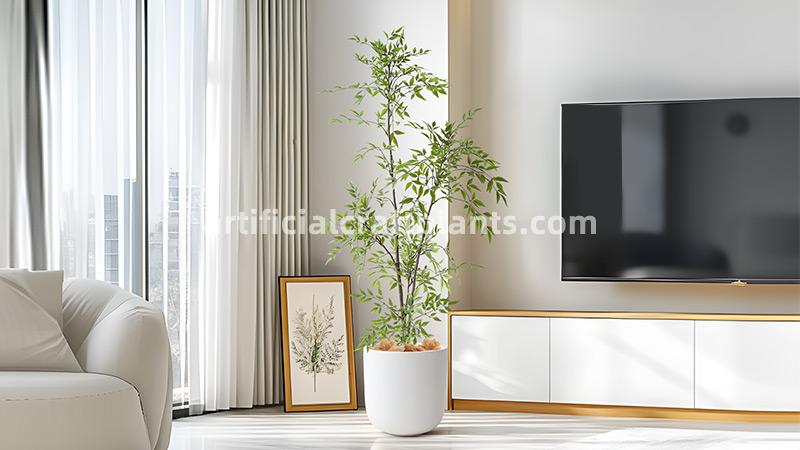Say Goodbye to Color Difference Woes: A Buyer's Guide to Sourcing True-to-Life Artificial Plants
Color inconsistencies in artificial plants can turn a promising purchase into a frustrating ordeal. Imagine ordering a lush green monstera, only to receive one with an unnatural blue-green hue. It’s a common issue, but it doesn't have to be.
How can buyers ensure they receive artificial plants that match their expectations in color and realism?
The key lies in understanding material choices, manufacturing processes, and quality control standards. This guide will equip you with the knowledge to source lifelike artificial plants without the headache of unexpected color variations.
Let’s dive into the details—why color differences occur, how to avoid them, and what to look for in high-quality artificial plants.
Why Do Artificial Plants Have Color Variations?
Artificial plants are supposed to mimic nature, yet many fail due to noticeable color discrepancies. But why does this happen?
Key Factors Behind Color Differences
- Material Composition – Different plastics, fabrics, and coatings absorb dyes differently, leading to variations in shade.
- Batch Production – Like any dyed product, different production batches may result in slight variations.
- Exposure to Light & Environment – UV exposure and humidity can alter color over time.
- Low-Quality Dyes & Inks – Inferior dyes may fade quickly or result in unnatural tones.
The Impact of Poor Color Matching
- Inconsistent Decor Aesthetic – A mismatched artificial plant can disrupt the harmony of a space.
- Customer Complaints & Returns – Businesses suffer when products don’t match online listings.
- Shortened Product Lifespan – Fading or discoloration makes the plant look fake faster.
So, how do you avoid these issues when sourcing? Let’s break it down.
How to Ensure True-to-Life Color in Artificial Plants
Now that we know the causes, here’s how to make sure your artificial plants arrive in the perfect shade.
1. Choose the Right Material
Different materials hold color differently. Here’s a quick breakdown:
| Material Type | Pros | Cons |
|---|---|---|
| Silk Fabric | Soft, natural-looking hues | Can fade over time if untreated |
| PU (Polyurethane) | High realism, flexible texture | Higher cost |
| PE (Polyethylene) | Durable, UV-resistant | Slightly plastic-like finish |
| PVC (Polyvinyl Chloride) | Cost-effective | Less natural-looking in large leaves |
💡 Pro Tip: For best color stability, PU and PE are often the superior choices.
2. Request Real Sample Photos & Videos
Never rely solely on stock images. Ask suppliers for:
✅ Close-up shots in natural light
✅ Side-by-side comparisons with real plants
✅ Videos to see color shifts from different angles
3. Inquire About UV & Anti-Fade Treatment
High-quality artificial plants should be treated with UV protection to prevent fading. If using them outdoors, ask about:
- UV inhibitors in material blending
- Spray coatings for added protection
- Lab test results for colorfastness
4. Understand the Production Process
A good supplier controls color accuracy at multiple stages:
- Color Matching in Raw Material Stage – Ensuring the dye formulation is consistent.
- Batch Control During Production – Using standardized processes to minimize variation.
- Final Inspection – Comparing finished products with reference samples.
📌 Ask your supplier: "How do you ensure batch-to-batch color consistency?"
5. Test with a Small Order First
Before committing to a large purchase, place a small order to assess:
- Color accuracy
- Realism under different lighting conditions
- Durability over time
Common Myths About Artificial Plant Colors
🚫 "All artificial plants fade quickly."
Not true! High-quality UV-treated plants retain their color for years.
🚫 "Silk plants always look more realistic."
Not necessarily. PU plants often have better texture and color stability.
🚫 "Color variation is unavoidable."
While minor differences occur, a good supplier minimizes noticeable shifts.
Conclusion
Color consistency is crucial when sourcing artificial plants. By choosing the right materials, verifying color accuracy, and working with quality-focused suppliers, buyers can ensure their plants look true-to-life. Don’t leave color to chance—demand quality and get the perfect shade every time!

Hello everyone, I'm Li!By day, I'm a seasoned expert in the artificial plant industry, starting from the factory floor and working my way up to running my own successful business. In my free time, I’m passionate about running and often join trail runs with friends.Here to share what I've learned—let's grow together!



